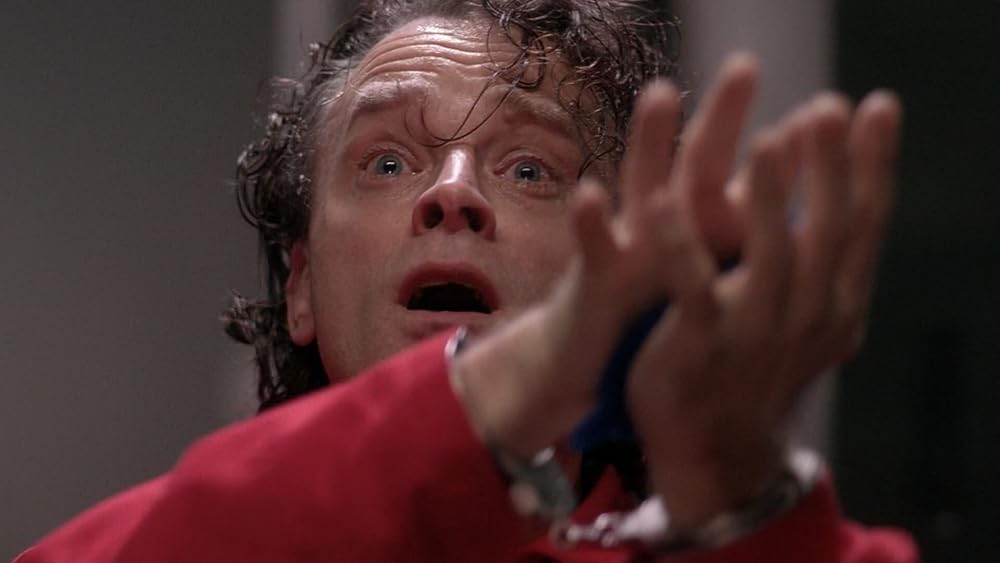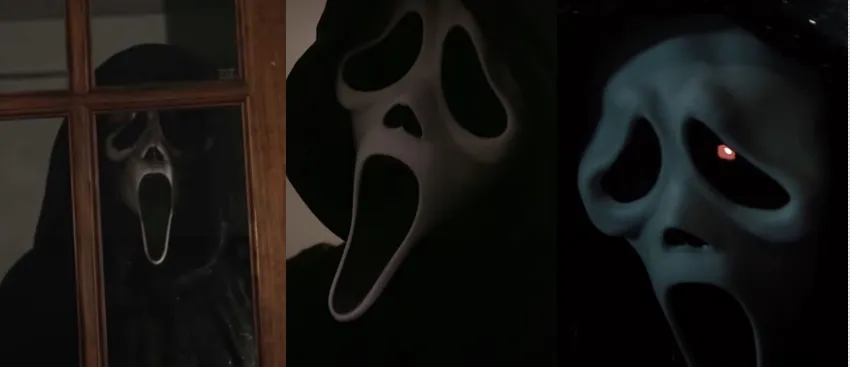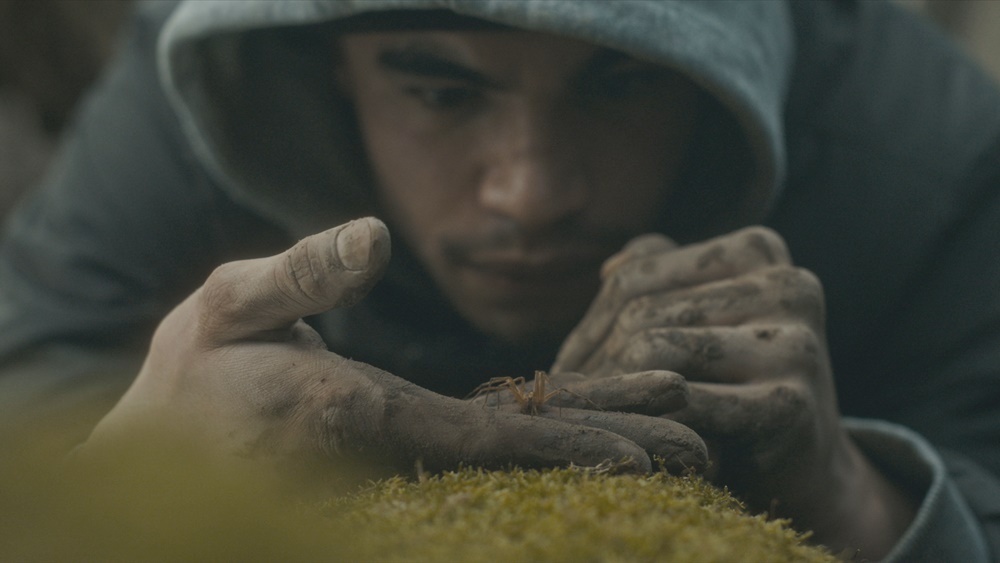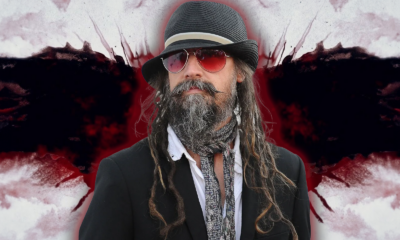News
It’s 2017. Where are the Queer Horror Characters?
Pride Month is here again. This year we celebrate two years since the Supreme Court decision for marriage equality. We celebrate increased visibility in both television and film for LGBTQ characters and issues. We still have a long way to go with a Vice President who believes in conversion therapy and a President who pretends we don’t exist at all unless he can use us in some way, but we have been making steps.
And yet…
As a gay man who is an avid horror fan, I cannot help but notice that another year has come and gone without a single queer character in a mainstream horror film. Not one, and before you jump on my case, think about it. I’m not talking about subtext. I’m not talking about moments that hint at the possibility that a character might be in some way perceived as a member of the LGBTQ community. I’m talking about an LGBTQ character written and performed that way.
Until recently, I could not put my finger exactly on a why it was that we were constantly omitted. We’re certainly included in indie films all the time. In fact, there are a host of independent films that have not only featured queer characters in the last year, but entire films have been built around them, but the problem is that most don’t have the resources or reach for widespread audiences.
How many of you have seen Dominic Haxton’s short film “Tonight It’s You”? The 2016 short film centers around C.J. who goes out late one night for a hookup and finds himself in the center of an exorcism gone horribly wrong. How many have seen Pitchfork which centers around a young gay man going home to seal the deal on coming out to his family, only to find them murdered and he and his friends tracked by a feral killer with a pitchfork for a hand?
There are exceptions to this, of course. One has to applaud The Taking of Deborah Logan from 2014 for not only including a lesbian character in their film, but also for making her the most real lesbian I’ve ever seen in a horror film. She wasn’t there to titillate the young male demographic by running around half naked and making passes at the other female characters. Rather, she was a fully developed female character dealing with horrific circumstances who just happened to be a lesbian. Deborah Logan exploded due to word of mouth about the excellent film and reached a much wider audience than the filmmakers ever expected.

Anne Ramsay and Jill Larson in The Taking of Deborah Logan
Many of these filmmakers never see this kind of following, and yet they continue to work, creating new queer characters for audiences to sink their teeth into, and we clamor for them even when they aren’t the best films because we are starved for representation.
But let’s get back to the issue at hand. What’s keeping queer characters out of mainstream horror films? Are we simply not being written into the scripts or are studio heads and producers stepping in to make changes? And why does it matter anyway?
OK, let’s break this down:
Are queer characters not being written into scripts or are our orientations being straightened to make the squeamish suits in charge more comfortable?
I had the great pleasure of speaking with a noted Hollywood screenwriter recently and we found ourselves on this particular subject. He mentioned that in every single one of his scripts, he always includes one or two queer characters. He lamented that most of the time those characters’ orientations were changed and for two reasons.
- The actor cast in the role isn’t comfortable playing gay or his representation doesn’t want him to be typecast early in his career. I say bullshit to this. If an actor isn’t comfortable playing gay, he shouldn’t have auditioned for the part. There are so many queer actors out there and I know there has to be one of them who’d jump at the chance to take the role. If you’re a straight male who can’t play gay because you’re afraid of what people will say or you don’t think you can handle it, bow out gracefully or, better yet, don’t audition for the role in the first place in the hopes that it will change later.
- The producers get squeamish. The writer I spoke to said he’s never had a problem with a director wanting to change the orientation of his characters, and it certainly isn’t from the camera operators and various other crew. No, his problems have almost always come from the producers. Producers who “worry they will lose some of their audience” if they have a main character who’s gay. Producers who worry they won’t be able to sell a film in certain areas of the country/world because a character is gay. I mean, according to the religious right we’re responsible for earthquakes, train wrecks, and various other disasters, so I suppose it’s not that far-fetched that a movie might lose a few bucks. My question to them, however, is if they’ve crunched the numbers on how much money they’d make from the LGBTQ community if they DID keep those characters as they were written.
Why does it matter anyway?

Denis O’Hare as Liz Taylor in American Horror Story
To be completely frank, because it does. The target audience for horror films according to SlideShare.com is lower to middle class white males aged 15-25. It might or might not surprise you to find that there is a significant overlap of the demographics with those groups listed by the Human Rights Coalition as most likely to commit hate crimes against the queer community.
Now, imagine if we could normalize queer characters for this particular demographic. Imagine if they saw, more regularly, characters in horror films who were, in fact, LGBTQ. That’s not the most important thing about them. That’s not the thing that stands out most about them. They just happen to be queer and dealing with the same slasher/threat as everyone else in the film.
Also, those young queer horror fans, like everyone else, look for themselves in film. You’d be surprised just how much it means to a young queer kid to see someone like them on film and to know that they aren’t alone in this world. Why do you think “American Horror Story” continues to do so well in the ratings with young queer audiences? Ryan Murphy, because he is gay himself, continues to write queer characters for the show each season. You’d be surprised how much seeing themselves on film can mean the difference between life and death.
And finally, what’s the answer?

Mark Patton and Robert Rusler in A Nightmare on Elm Street 2
Well, for starters, that isn’t clear cut. Yes, we want representation in horror, but much like minority actors up for an Oscar, we don’t want it to feel like a consolation prize or that it was given to us just to shut us up. However, I do feel like compromises from both sides will have to be made before all of this is said and done.
For one thing, we must be willing to accept being stereotyped to at least some degree, especially in the beginning. Everyone in a horror movie is a stereotype of some kind. From the dumb blonde to the horny jock to wimpy nerd with a heart of gold to the final girl, the genre is based on these tropes. That’s the entire reason Cabin in the Woods exists. It is an indignity, but one that must be suffered through if we are to gain footing. After all, for every Laurie Strode who turns and fights, there are a hundred Lyndas and Annies who are served up on the chopping block.
Likewise, producers, writers, etc. have to meet us halfway. We promise if you write us into your films and show us through the same lens as everyone else, we will show up. We will watch and we will bring our friends with us.
We cannot accept tokenism outright, however. Being the token queer can be almost as harmful as not being represented at all. Horror blogger Wendy N. Wagner says this on tokenism:
“What makes it so frustrating when bad things happen to queer characters is that it’s usually that the queer couple—or the one queer character—that’s it, they’re the only queers on the screen, and they’re sort of like the token. And any time you have a situation where someone is the token, they’re kind of like the stand-in for every queer person who’s watching the movie. … [But] when you have a whole bunch of queer characters and bad things are happening, it’s just like, well, horror sucks. … If you have a lot of great queer characters in your story, it doesn’t really matter if one of them gets their head chopped off and Cthulhu sucks out their blood, because that’s just going to happen to everybody.”
For those who have read this far and are wondering what the solution is, I’m afraid there is no clear answer other than queer horror fans everywhere want and in some instances need to see themselves onscreen.
I do know this: In 20 years, we don’t want A Nightmare on Elm Street 2 and Hellbent to still be the only films that immediately spring to mind when we’re talking about queer horror films. We are more than these two films and we demand more from horror filmmakers.
Listen to the 'Eye On Horror Podcast'

News
Brad Dourif Says He’s Retiring Except For One Important Role

Brad Dourif has been doing movies for nearly 50 years. Now it seems he is walking away from the industry at 74 to enjoy his golden years. Except, there is a caveat.
Recently, digital entertainment publication JoBlo’s Tyler Nichols talked to some of the Chucky television series cast members. During the interview, Dourif made an announcement.
“Dourif said that he’s retired from acting,” says Nichols. “The only reason he came back for the show was because of his daughter Fiona and he considers Chucky creator Don Mancini to be family. But for non-Chucky stuff, he considers himself retired.”
Dourif has voiced the possessed doll since 1988 (minus the 2019 reboot). The original movie “Child’s Play” has become such a cult classic it’s at the top of some people’s best chillers of all time. Chucky himself is ingrained in pop culture history much like Frankenstein or Jason Voorhees.
While Dourif may be known for his famous voiceover, he is also an Oscar-nominated actor for his part in One Flew Over the Cuckoo’s Nest. Another famous horror role is The Gemini Killer in William Peter Blatty’s Exorcist III. And who can forget Betazoid Lon Suder in Star Trek: Voyager?
The good news is that Don Mancini is already pitching a concept for season four of Chucky which might also include a feature-length movie with a series tie-in. So, Although Dourif says he is retiring from the industry, ironically he is Chucky’s friend till the end.
Listen to the 'Eye On Horror Podcast'
Editorial
7 Great ‘Scream’ Fan Films & Shorts Worth a Watch

The Scream franchise is such an iconic series, that many budding filmmakers take inspiration from it and make their own sequels or, at least, build upon the original universe created by screenwriter Kevin Williamson. YouTube is the perfect medium to showcase these talents (and budgets) with fan-made homages with their own personal twists.
The great thing about Ghostface is that he can appear anywhere, in any town, he just needs the signature mask, knife, and unhinged motive. Thanks to Fair Use laws it’s possible to expand upon Wes Craven’s creation by simply getting a group of young adults together and killing them off one by one. Oh, and don’t forget the twist. You’ll notice that Roger Jackson’s famous Ghostface voice is uncanny valley, but you get the gist.
We have gathered five fan films/shorts related to Scream that we thought were pretty good. Although they can’t possibly match the beats of a $33 million blockbuster, they get by on what they have. But who needs money? If you’re talented and motivated anything is possible as proven by these filmmakers who are well on their way to the big leagues.
Take a look at the below films and let us know what you think. And while you’re at it, leave these young filmmakers a thumbs up, or leave them a comment to encourage them to create more films. Besides, where else are you going to see Ghostface vs. a Katana all set to a hip-hop soundtrack?
Scream Live (2023)
Ghostface (2021)
Ghost Face (2023)
Don’t Scream (2022)
Scream: A Fan Film (2023)
The Scream (2023)
A Scream Fan Film (2023)
Listen to the 'Eye On Horror Podcast'
Movies
Another Creepy Spider Movie Hits Shudder This Month

Good spider films are a theme this year. First, we had Sting and then there was Infested. The former is still in theaters and the latter is coming to Shudder starting April 26.
Infested has been getting some good reviews. People are saying that it’s not only a great creature feature but also a social commentary on racism in France.
According to IMDb: Writer/director Sébastien Vanicek was looking for ideas around the discrimination faced by black and Arab-looking people in France, and that led him to spiders, which are rarely welcome in homes; whenever they’re spotted, they’re swatted. As everyone in the story (people and spiders) is treated like vermin by society, the title came to him naturally.
Shudder has become the gold standard for streaming horror content. Since 2016, the service has been offering fans an expansive library of genre movies. in 2017, they began to stream exclusive content.
Since then Shudder has become a powerhouse in the film festival circuit, buying distribution rights to movies, or just producing some of their own. Just like Netflix, they give a film a short theatrical run before adding it to their library exclusively for subscribers.
Late Night With the Devil is a great example. It was released theatrically on March 22 and will begin streaming on the platform starting April 19.
While not getting the same buzz as Late Night, Infested is a festival favorite and many have said if you suffer from arachnophobia, you might want to take heed before watching it.
According to the synopsis, our main character, Kalib is turning 30 and dealing with some family issues. “He’s fighting with his sister over an inheritance and has cut ties with his best friend. Fascinated by exotic animals, he finds a venomous spider in a shop and brings it back to his apartment. It only takes a moment for the spider to escape and reproduce, turning the whole building into a dreadful web trap. The only option for Kaleb and his friends is to find a way out and survive.”
The film will be available to watch on Shudder starting April 26.
Listen to the 'Eye On Horror Podcast'
-

 News3 days ago
News3 days agoThis Horror Film Just Derailed a Record Held by ‘Train to Busan’
-

 Movies4 days ago
Movies4 days agoWatch ‘Immaculate’ At Home Right Now
-

 News3 days ago
News3 days agoHome Depot’s 12-Foot Skeleton Returns with a New Friend, Plus New Life-Size Prop from Spirit Halloween
-

 News5 days ago
News5 days agoRead Reviews For ‘Abigail’ The Latest From Radio Silence
-

 News2 days ago
News2 days agoWoman Brings Corpse Into Bank To Sign Loan Papers
-

 News4 days ago
News4 days agoMelissa Barrera Says Her ‘Scream’ Contract Never Included a Third Movie
-

 Editorial5 days ago
Editorial5 days agoRob Zombie’s Directorial Debut Was Almost ‘The Crow 3’
-

 News4 days ago
News4 days agoA24 Joins Blockbuster Movie Club With Their Biggest Opening Ever






















You must be logged in to post a comment Login